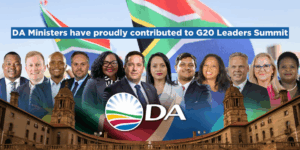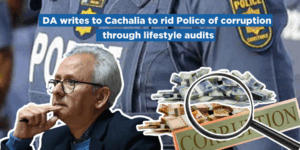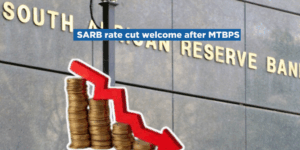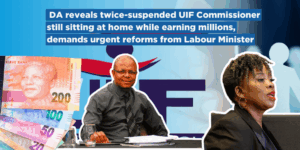These remarks were made by the Executive Mayor of Tshwane, Solly Msimanga, at the CSIR Knowledge Commons on Smart and Sustainable Cities and Transport.
Thank you for the opportunity to address this forum of academic and research experts assembled in the City of Tshwane for the CSIR Knowledge Commons.
The focus on Smart and Sustainable Cities and Transport resonates strongly with the City of Tshwane. As both the administrative capital of South Africa and a metropolitan municipality, we have openly declared our commitment to progressively realising our goal of being the Green Capital of South Africa. We have a duty to lead by example and frankly we are leaving no stone unturned in our pursuit of this worthy title.
The transition to a resilient and resource efficient city found its expression in the Strategic Framework to a Green Economy Transition, a policy document that identifies a number of interventions that change the face and outcome of service delivery provided that sufficient resources and partnerships are in place to support this transition.
There are some experts in this very room that assisted in the crafting of this aspirational policy framework. Your energies have assisted greatly in supporting our steady progress to sustainable service delivery. We really appreciate your efforts.
In support of the execution of this policy framework, a dedicated Unit was established known as the City Sustainability Unit which has been strategically located in the Office of the Executive Mayor so that this team can facilitate transversal processes that are typically thwarted by the silo-syndrome.
In addition to this Unit, another key technical unit was set up – Economic Intelligence. This unit’s job is to mine data and make sense of it so that we can develop policies and plans that are evidence-based and rooted in reality to better inform some of our projects, programmes and initiatives.
The City of Tshwane has the Research and Innovation Unit, which is the custodian of our official partnerships with a rich assortment of Tshwane-based knowledge centres. The existence of these research and tertiary facilities in the City of Tshwane yields an extraordinary knowledge economy from which to draw. This is, without a doubt, an enduring feature that sets Tshwane apart from many other urban centres and gives it a competitive edge.
However, this competitive edge can only really materialise through structured partnerships between the municipality and the respective entities. Such a partnership exists with the University of Pretoria and I have been reliably informed that a memorandum of understanding with the CSIR is in the process of being renewed.
And the issue of strategic partnerships is an important issue for me because as the Executive Mayor of the City of Tshwane, I have a mandate to ensure that the vision and goals contained within our five-year plan – our Integrated Development Plan (IDP) – become a reality for the residents of the City.
Our IDP highlights the strategic pillars as follows:
- The first pillar is that Tshwane is a City that facilitates economic growth and job creation;
- Second is that it is a City that cares for its residents and promotes inclusivity;
- Third is that it is a City that delivers excellent services and protects the environment;
- The fourth pillar is that Tshwane keeps its residents safe; and
- The last is that Tshwane is a city that is open, honest and responsive.
It is the first and second pillars that speak to the role of transport in the City, particularly through our ninth priority which states that we are promoting safe, reliable and affordable transportation system.
Currently, we are tackling the issue of affordability in line with being an open and responsive administration. Thus on 28 June I announced the reduction of public transport fares and have duly implemented the affordable fare collection system to ensure that fares are in line with other public transport providers. We trust that this will remove any financial barriers to the uptake of our service offering.
We are also extremely mindful of the carbon footprint we create as we travel around the city. Our baseline Greenhouse Gas Emissions Inventory, calculated for the 2014/15 financial year, has shown that we emit in the region of 4,5 million tonnes of carbon dioxide equivalent per annum.
We have a Comprehensive and Integrated Transport Plan that has an entire chapter dedicated to Sustainable Transport and I must say on paper it sounds quite easy. One, we need to stop driving single occupancy vehicles; 2) we need to cycle and walk for short distance travel; 3) we need to use mass transit for longer journeys; 4) our mass transit needs a fuel switch so we see an uptake of low carbon mobility; and 5) the municipality needs to take the lead and put all these simple steps into practice.
We have an annual ride called the Tshwane Green Ride underpinned by the notion that riding is a great alternative to other forms of mobility.
This ride has spawned a pack of “Kasi rides” where township riding clubs are forming and demonstrating that riding does not have to be for the privileged few.
I have participated in a couple of these rides and I can immediately detect why people may not feel that drawn to cycling as an alternative to driving. Try being a cyclist in Solomon Mahlangu Drive travelling from Nellmapius to Centurion – it can be hair-raising experience which has unfortunately in a few tragic instances resulted in the loss of life.
However, on the other hand, when one then considers the upgrades in other parts of the city where wide pavements allow for a spectrum of non-motorised uses, I believe that this approach to infrastructure upgrades sets the correct tone for how mobility infrastructure should evolve in the City.
In October, we are going to close some streets in Hatfield to create a car-free zone for students and other pedestrians. The City has long toyed with the idea of pedestrian zones and it is time to demonstrate how this can be done.
This activation also strongly supports a partnership between the municipality and the University of Pretoria to launch an e-bike and bike share scheme, a concept that has been successfully tried and tested in places like Stellenbosch in the Western Cape.
Programme Director;
In terms of our mass transit, we are steadily unfolding the Bus Rapid Transit system and yes it may be a bit slow to take off but it is the right investment for a City that is pursuing compaction and densification. It is very interesting to see the effect that the announcement of A Re Yeng lanes has had on property values. It shows that the market really does understand the value of a modern and innovative mass transit system.
Furthermore, A Re Yeng has invested in 20 buses run on compressed natural gas and I am informed that we are also exploring an investment or partnership in electric buses for our Tshwane Bus Service.
These actions are in line with our being a signatory of the Clean Bus Declaration, an initiative spearheaded by the C40 Cities for Climate Leadership. This is a network of mega-cities committed to playing their part in ensuring a better world for future generations.
Beyond our bus fleet, we have taken a preliminary step to improving the footprint of our corporate fleet with the purchase of 10 electric vehicles. This move is also in line with our commitment to sustainable procurement, using our purchasing power to achieve particular environmental objectives.
Going one step further, we have also erected a couple of solar powered EV charging stations as we wanted to demonstrate that these vehicles can be truly green and run off the grid. More electric vehicle infrastructure will be rolled out throughout the City through a partnership with SANEDI and whilst not all charging stations will be solar-powered, EVs still have a far lower emissions profile than conventional vehicles so we are satisfied that this is the correct approach.
This point takes me to the great strides being taken by both CSIR and University of Pretoria in collaboration with the City with respect to renewable energy. The CSIR, as part of its green campus programme, has installed two PV farms and a biogas digester to mention a few. University of Pretoria has piloted a hydro-energy plant at one of our reservoirs, demonstrating that we can operate these reservoirs without the need to pay for dirty and costly electricity.
The municipality is also actively pursuing a low energy future for the City. At the forefront is the development of a small-scale embedded generation policy which Council has approved for public consultation. The aims of the policy are to streamline the application process as we wish to facilitate rather than be an impediment; to keep a record of applications and compliance with relevant legislation and standards; and lastly, to report applications to NERSA.
We have noted a trend in the City especially at shopping centers where property owners are installing photovoltaic panels to generate and supply renewable energy for own use. We also anticipate more and more small consumers are following this trend.
As a municipality it is our responsibility to regulate the installation of this infrastructure ensuring that it conforms to available standards supplied by NERSA. In the same breath, we want to explore the installation of PV panels on our municipal buildings’ rooftops so as to demonstrate how these can be taken off the grid and reduce operating expenses. Our first such building will be the HP Phillips building which is on the brink of being refurbished and the refurbishment process will also include the greening of the building.
This retrofitting is part of our membership to the Building Efficiency Accelerator Programme under the auspices of the World Resources Institute. It is also a facet of our broader green building programme launched when we became the first municipality to promulgate a green building by-law. We are also a member of the Green Building Council of South Africa’s Green Building Leadership Network and we have recently occupied our municipal headquarters, Tshwane House, which is a five-star green-rated building.
The theme of resource efficiency which is part and parcel of why entities such as ourselves pursuing green development leads to the equally vexing question of resourcefulness or the lack thereof.
Is waste a resource? If it is a resource then why are we disposing of waste in landfills. We are driving a process of facilitating the provision of recycling infrastructure through private sector partnerships to prevent the unnecessary disposal of waste that can be repurposed and beneficiated. We opened our first multi-purpose material recovery facility in November 2016 – a bitter sweet memory for me as I recalled how as a child I used to play in the mielie fields of what was then the buffer zone of the Kwaggasrand landfill site.
Now this buffer zone is providing a critical enviro-economic service and creating green jobs for the residents of Atteridgeville. All of these initiatives resonate with the third pillar that Tshwane is a City that delivers excellent services and protects the environment. Essential services must be provided whilst ensuring the highest levels of environmental protection.
Another attribute in building a Smart City is through broadband internet connectivity, where we can provide ease of access to residents and be able to integrate a number of systems. In line with the principles and objectives of the smart city vision, The Tshwane Free Wi-Fi was initiated in an effort to help bridge the city and the world digital divide.
t is through Free Wi-Fi that we will be able to strengthen our commitment to Batho Pele Principles of 1) Consultation 2) Openness and transparency and 3) Access to information. Apart from having a well-informed society, internet connectivity should also be used for purposes of service delivery in order to improve and address some of the challenges. We should explore use of internet connectivity in various ways such as:
- Can we install and integrate sensors to monitor city infrastructure into a single dashboard?
- How can we improve our billing system? Can we install sensors on water and electricity meters that automatically send monthly readings?
- How can we improve transport management- to improve traffic flow, to inform users of any delays and/or timetable updates?
- Can we develop an interactive system where faults, leaks and outages can be reported using GPS locators on phones?
City of Tshwane is on track on some of the electronic services such as E-Tshwane (Account management and customer services interaction), E-Recruitment (jobs and careers), Namola App (connecting citizens to safety), E-Procurement (sourcing and business opportunities with the city), E-Tshwane Portal (Investment attraction, facilitation and after care)
In conclusion;
It goes without saying that we will be leaning very heavily on your institutions and your expertise to help us identify the pitfalls and map out the solutions in improving to smarten up our cities.
I wish every delegate and participant a fruitful and successful Seminar.
Let me, once again, welcome you to the City of Tshwane, the City that “Ignites Excellence”.
Thank you.




